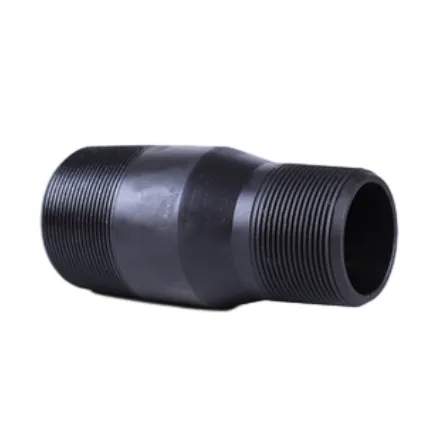- Afrikaans
- Albanian
- Amharic
- Arabic
- Armenian
- Azerbaijani
- Basque
- Belarusian
- Bengali
- Bosnian
- Bulgarian
- Catalan
- Cebuano
- Corsican
- Croatian
- Czech
- Danish
- Dutch
- English
- Esperanto
- Estonian
- Finnish
- French
- Frisian
- Galician
- Georgian
- German
- Greek
- Gujarati
- Haitian Creole
- hausa
- hawaiian
- Hebrew
- Hindi
- Miao
- Hungarian
- Icelandic
- igbo
- Indonesian
- irish
- Italian
- Japanese
- Javanese
- Kannada
- kazakh
- Khmer
- Rwandese
- Korean
- Kurdish
- Kyrgyz
- Lao
- Latin
- Latvian
- Lithuanian
- Luxembourgish
- Macedonian
- Malgashi
- Malay
- Malayalam
- Maltese
- Maori
- Marathi
- Mongolian
- Myanmar
- Nepali
- Norwegian
- Norwegian
- Occitan
- Pashto
- Persian
- Polish
- Portuguese
- Punjabi
- Romanian
- Russian
- Samoan
- Scottish Gaelic
- Serbian
- Sesotho
- Shona
- Sindhi
- Sinhala
- Slovak
- Slovenian
- Somali
- Spanish
- Sundanese
- Swahili
- Swedish
- Tagalog
- Tajik
- Tamil
- Tatar
- Telugu
- Thai
- Turkish
- Turkmen
- Ukrainian
- Urdu
- Uighur
- Uzbek
- Vietnamese
- Welsh
- Bantu
- Yiddish
- Yoruba
- Zulu
Feb . 13, 2025 04:33
Back to list
what are the differences between casing and tubing?
Casing and tubing are integral components in the oil and gas extraction industry, each serving a critical role within the drilling operations. While both are types of pipes used in the drilling process, they fulfill distinct functions requiring a clear understanding to enhance safety, efficiency, and cost-effectiveness in projects. This article delves into the key differences between casing and tubing, focusing on experience, expertise, authoritativeness, and trustworthiness to equip industry professionals with comprehensive insights.
Operationally, the differences manifest in maintenance and monitoring requirements. Casing, once fixed, requires minimal intervention unless specific issues like casing damage or leaks are detected. Tubing, due to its active role in production, experiences wear and tear from the fluid flow and pressure cycles, necessitating regular inspections and sometimes retrieval for maintenance or replacement. Another crucial difference is the roles these components play in well integrity and safety. The casing design must accommodate potential wellbore instability issues and isolate problematic zones such as water-bearing layers or permeable fronts. Tubing designs emphasize flow efficiency and reservoir management, adapting to changes in production rates and reservoir pressure over time. When assessing the financial aspects, casing represents a significant initial capital investment due to its critical safety and structural role and is often bespoke to the geological requirements of the well. Tubing requires investment over time as it is subject to wear, and its replacement is a planned component of operational expenditure. Understanding these distinctions is vital for optimizing drilling operations. Enhanced safety protocols, cost management strategies, and production efficiency all hinge on correctly selecting and using casing and tubing. The industry benefits from a nuanced approach where experience, field conditions, and technological advancements dictate material selection, design parameters, and maintenance regimes. This segmentation forms the foundation of successful drilling projects, ensuring resource extraction processes are conducted in a safe, efficient, and economically viable manner. Through leveraging expert knowledge, industry professionals can effectively navigate the challenges presented by casing and tubing, achieving both operational excellence and environmental compliance.


Operationally, the differences manifest in maintenance and monitoring requirements. Casing, once fixed, requires minimal intervention unless specific issues like casing damage or leaks are detected. Tubing, due to its active role in production, experiences wear and tear from the fluid flow and pressure cycles, necessitating regular inspections and sometimes retrieval for maintenance or replacement. Another crucial difference is the roles these components play in well integrity and safety. The casing design must accommodate potential wellbore instability issues and isolate problematic zones such as water-bearing layers or permeable fronts. Tubing designs emphasize flow efficiency and reservoir management, adapting to changes in production rates and reservoir pressure over time. When assessing the financial aspects, casing represents a significant initial capital investment due to its critical safety and structural role and is often bespoke to the geological requirements of the well. Tubing requires investment over time as it is subject to wear, and its replacement is a planned component of operational expenditure. Understanding these distinctions is vital for optimizing drilling operations. Enhanced safety protocols, cost management strategies, and production efficiency all hinge on correctly selecting and using casing and tubing. The industry benefits from a nuanced approach where experience, field conditions, and technological advancements dictate material selection, design parameters, and maintenance regimes. This segmentation forms the foundation of successful drilling projects, ensuring resource extraction processes are conducted in a safe, efficient, and economically viable manner. Through leveraging expert knowledge, industry professionals can effectively navigate the challenges presented by casing and tubing, achieving both operational excellence and environmental compliance.
Latest news
-
Tubing Pup Joints: Essential Components for Oil and Gas OperationsNewsJul.10,2025
-
Pup Joints: Essential Components for Reliable Drilling OperationsNewsJul.10,2025
-
Pipe Couplings: Connecting Your World EfficientlyNewsJul.10,2025
-
Mastering Oilfield Operations with Quality Tubing and CasingNewsJul.10,2025
-
High-Quality Casing Couplings for Every NeedNewsJul.10,2025
-
Boost Your Drilling Efficiency with Premium Crossover Tools & Seating NipplesNewsJul.10,2025
Related Products







